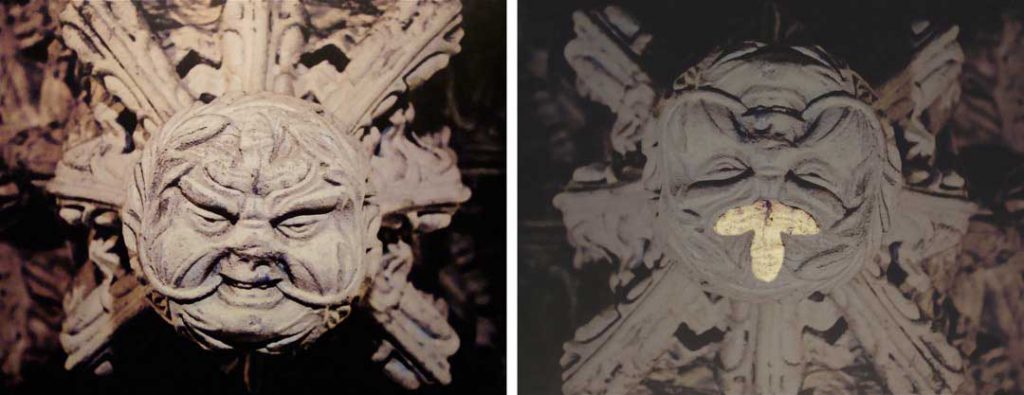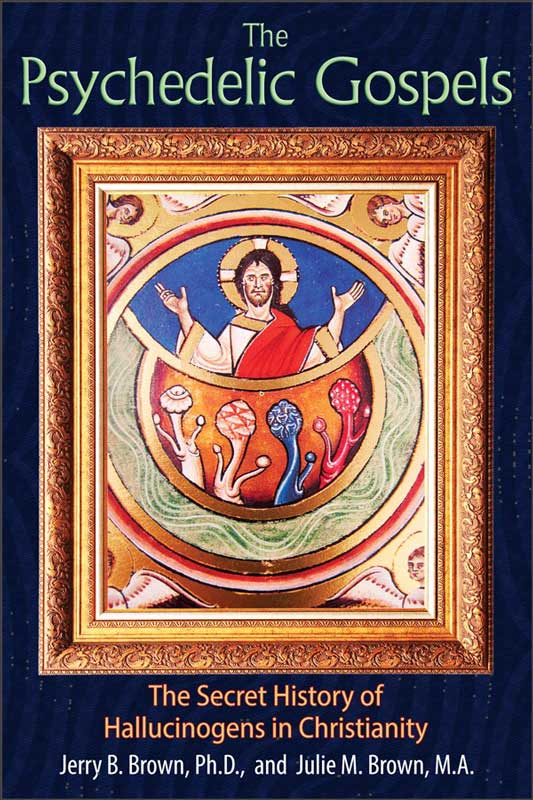Skeptical scrutiny is the means, in both science and religion, by which deep thoughts can be winnowed from deep nonsense.
Carl Sagan
Julie and my research on The Psychedelic Gospels began quite unexpectedly in 2006 with a visit to Rosslyn Chapel in Scotland. This visit was inspired by Dan Brown’s popular novel, The Da Vinci Code, which considers Rosslyn to be a possible resting place for the remains of Mary Magdalene, who according to the book was the wife of Jesus and the mother of his child.
In recent years, Rosslyn has been the focal point of fanciful histories, linking it with the Knights Templar, the Freemasons, and the Ark of the Covenant. A most intriguing connection between Rosslyn and Mary Magdalene can be traced to The Holy Blood and The Holy Grail, an alternative religious history by Michael Baigent and his coauthors, first published in England in 1982. This book, which provides the premise for The Da Vinci Code novel and film, introduces the theory that Jesus survived the crucifixion, that he and Mary Magdalene were married, and that they had a child whose bloodline survives to this day—a royal bloodline (sang real) protected through the ages by a secret Priory of Sion.
While at Rosslyn, I made a surprising discovery. Ultimately this discovery resulted in our rejection of Dan Brown/Michael Baigent’s revision of the master story of Christianity, as well as in our proposal of the controversial theory of The Psychedelic Gospels. Based on stunning visual evidence of psychedelics in religious art in churches and cathedrals throughout Europe and the Middle-East, the theory argues that visionary plants played a seminal role in the origins of Christianity and by implication in the life of Jesus.
During that visit to Rosslyn, I purchased a plaster replica of the Chapel’s most prominent green man, one of over 100 green man heads that decorated the interior of this enigmatic church, this “bible in stone,” which presents a rare juxtaposition of Catholic and Pagan symbolism. Several weeks after leaving Rosslyn, I was sitting in an Italian restaurant in St. Andrews, Scotland, on what would turn out to be a most fateful day. While slowly rotating the green man head on the table, I noticed a psychoactive Amanita muscaria mushroom sculpted upside down in its forehead. Suddenly, I wondered: was the green man of Rosslyn Chapel a clue to the presence of visionary mushrooms in the history of Christianity?

Photo credit: Julie M. Brown
To read more about debunking The Da Vinci Code and our initial discovery of a psychedelic mushroom in Christian art, please see Chapter One, “Green Man of Rosslyn Chapel” in The Psychedelic Gospels (click here to purchase our book).






